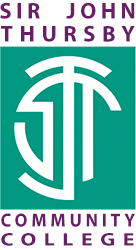Topic 4 Year 8 Mathematics
| Mathematics | |||
| Topic | Accuracy and Estimation | ||
| No of lessons | 8 | ||
| When is it happening | Term 1 Year 8 | ||
| What will students learn | This unit will use contexts involving measures and quantities that have been meet earlier such as area and perimeter, but the concepts from this unit can be revisited again in the summer term geometry units. Significant figures are introduced through measuring contexts. Rather than meeting significant figures as a set of rules to follow, students are required to work out why the zero is 45.0 is significant, in terms of what it tells us about the accuracy of measure and contrast this with the 0 in 0.45. Estimation is encountered in a variety of contexts and is an opportunity to practice rounding and unit conversions. | ||
| Key Knowledge that students should know at the end of 'Topic' | This is the knowledge that students will meet for the first time in this topic | • Round numbers to a required number of decimal places • Round numbers to a required number of significant figures • Identify rounding errors • Estimate quantities in a variety of contexts including area and perimeter • Identify and reason if an estimate is an over- or under-estimate | |
| This is knowledge that students may have met before but will need to deepen their understanding | Consolidate their understanding of rounding to a given decimal place | ||
| Key Skills that students should be able to demonstrate at the end of 'Topic' | This is the skills that students will meet for the first time in this topic | Place Value | |
| This is skills that students may have met before but will need to develop | Significant figures | ||
| Key vocabulary that students should know and understand | Significant, estimate, over/underestimate, root | ||
| The Big Question | I estimated that 7.85 x 29 = 240. Why is my estimated answer more than my exact answer? | ||
|
Key questions that students should be able to answer at the end of the 'Topic' |
What is 234.8 to the nearest integer | ||
| What is an appropriate estimate for Sqrt(67) | |||
| What does degree of accuracy mean? | |||
| How do you multiply decimals? | |||
| What are upper and lower bounds? | |||
| How can you express bounds as inequalities | |||
| How can you use bounds in calculations? | |||
